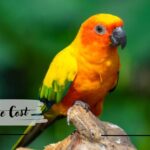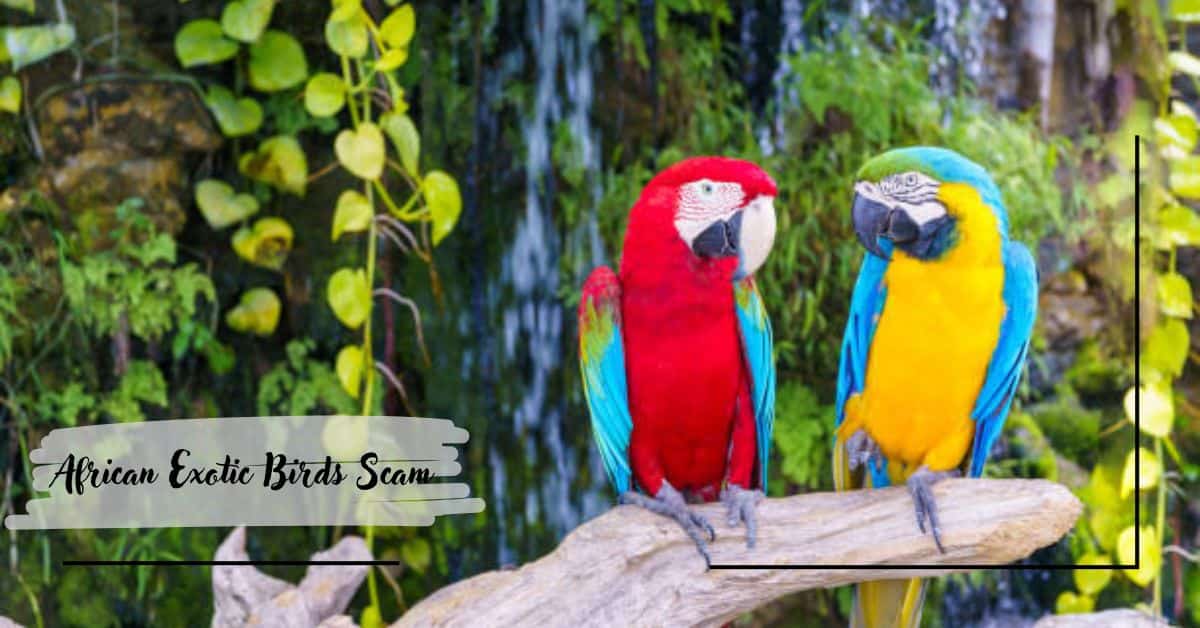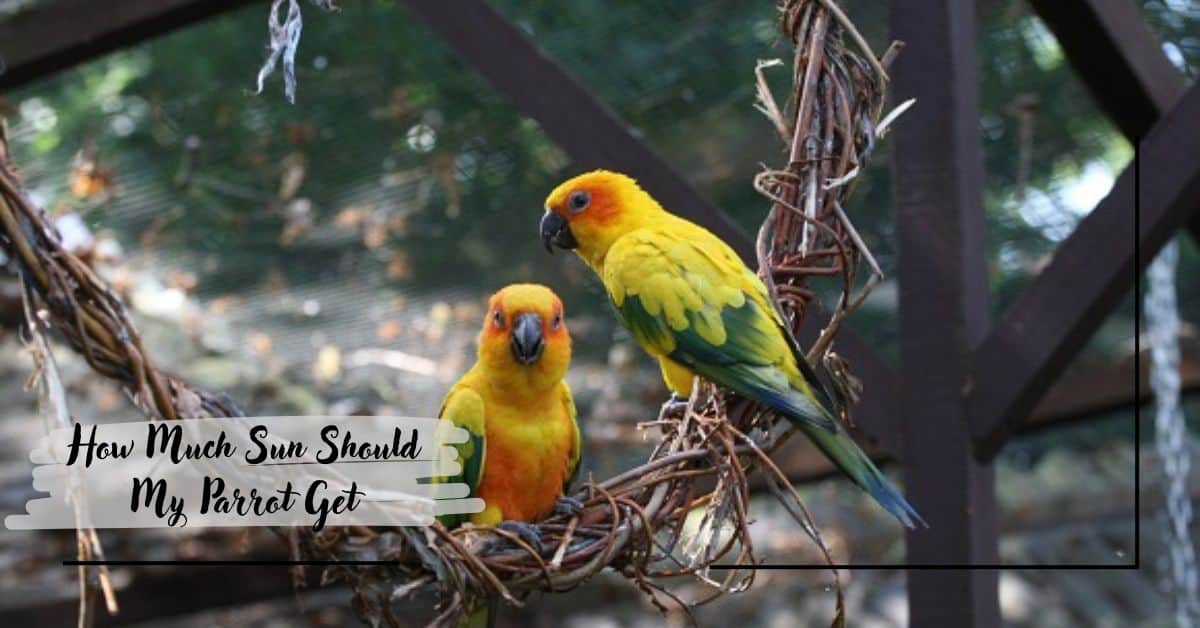Bird eggs come in a fascinating array of colors, and among the most striking are blue eggs. Various bird species produce these unique eggs, which serve different purposes in their natural habitats. Let’s explore which birds lay blue eggs, why they might do so, and what makes these eggs stand out.
The Appeal of Blue Eggs – Why Blue?
Blue eggs are not just aesthetically pleasing, they also offer practical benefits. The blue hue comes from a pigment called biliverdin, which is produced in the bird’s liver. This pigment not only gives the eggs their color but may also protect the developing embryo from harmful UV rays. Additionally, blue eggs might help camouflage the eggs in certain environments, although they can sometimes be more visible than other colors.
Blue Eggs Across Bird Species – What Bird Lays Blue Eggs!
American Robin
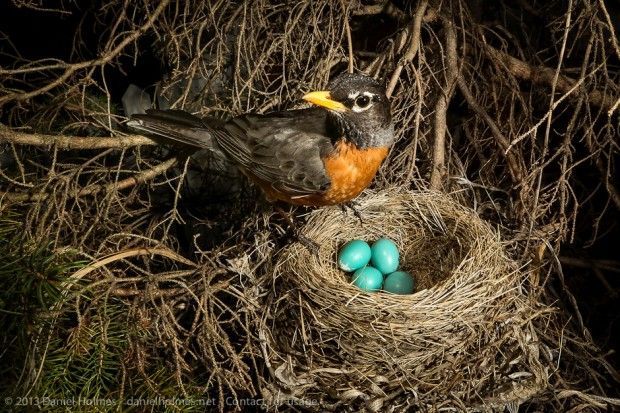
American Robins are famous for their bright blue eggs. Typically, a robin’s clutch consists of 3 to 5 eggs that are a vivid blue, sometimes tinged with greenish-blue. These eggs are usually laid in nests constructed from twigs, grass, and mud, positioned in trees or shrubs. The female robin incubates the eggs for about two weeks.
Blue Jay:
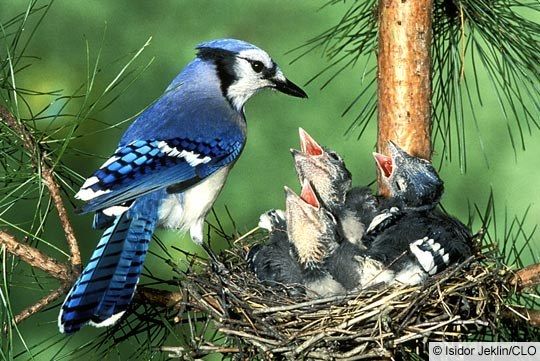
Blue Jays lay eggs that can range from pale greenish-blue to a more intense blue. Their nests, often built in trees, contain 2 to 7 eggs that are about 0.8 inches wide. The female incubates the eggs for 17 to 18 days while the male helps protect the nest and provide food.
House Finch:

House Finches produce 2 to 6 eggs that are a pale blue-green, frequently adorned with speckled patterns. These eggs are incubated by the female for around two weeks. House Finches often nest in low, sheltered locations like ledges or eaves.
Bluebird:

Bluebirds are known for their beautiful sky-blue eggs. A typical clutch includes 4 to 5 eggs, which are laid in tree cavities or nest boxes. The female incubates the eggs for 13 to 20 days. Bluebird populations have benefited from nest box programs, which help them raise multiple broods each year.
European Starling:

European Starlings lay 4 to 6 eggs that are a pale blue, sometimes with dark markings. These eggs are incubated by both parents for about 12 days. Starlings are aggressive nesters, often utilizing tree cavities and nest boxes.
House Sparrow:
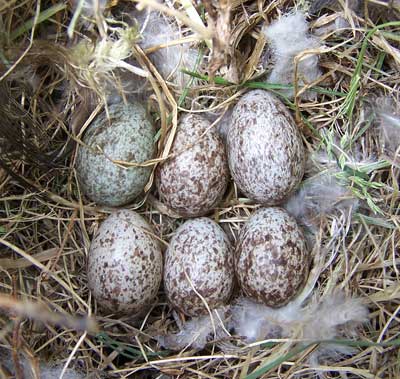
House Sparrows lay eggs that can be light blue or blue-green, sometimes with small speckles. Their clutches usually contain 3 to 6 eggs. These adaptable birds often build their nests in urban areas, such as on buildings or under eaves.
Cliff Swallow:
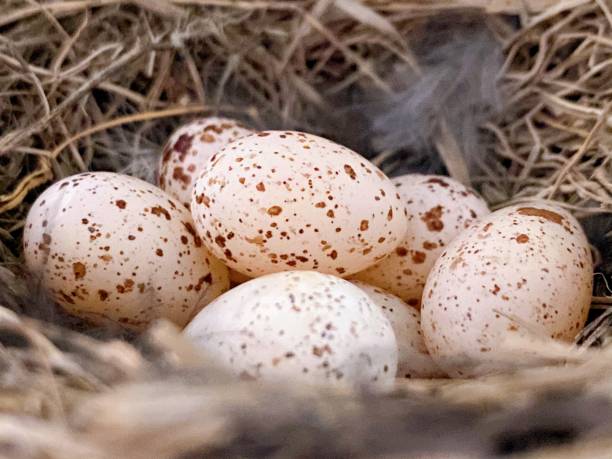
Cliff Swallows produce eggs that are light blue or greenish-blue, often speckled. They lay 3 to 6 eggs in their nests, which are built under bridges or in cliffside colonies. Both parents share the responsibility of incubation.
Blackbird:

Blackbird species, such as the Red-winged Blackbird, lay 2 to 5 eggs that are pale blue with dark scribbled patterns. These eggs are typically incubated by the female for 11 to 13 days. Red-winged Blackbirds often nest in marshes and dense vegetation.
Crows:
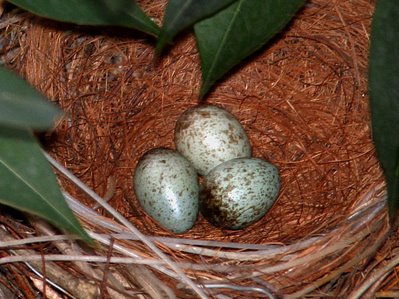
American Crows lay 3 to 9 eggs that are usually dull pale blue or green-blue with dark speckling. Their nests are large and bulky, built high in trees. The female incubates the eggs for 16 to 18 days, with the help of the male in providing food and protection.
Wood Thrush:
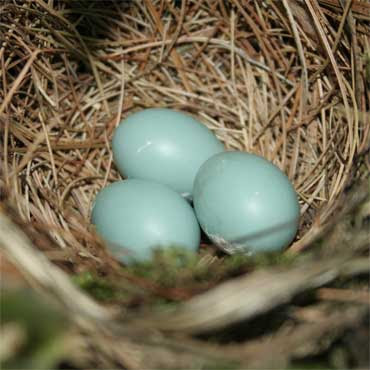
Wood Thrushes lay 3 to 4 turquoise-green eggs in a cup nest made of twigs, leaves, and other vegetation. The eggs are shiny and about one inch long. The female does most of the incubation and nest building.
Gray Catbird:
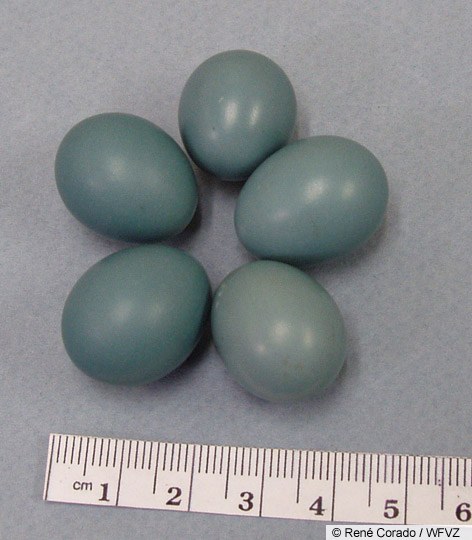
Gray Catbirds lay 1 to 6 eggs that are a beautiful blue, ranging from sky blue to a sea-green hue. The female incubates these eggs for 12 to 13 days. Catbirds build their nests in shrubs or vines, often in suburban areas.
Dunnock:

Dunnocks, also known as Hedge Sparrows, lay 3 to 6 sky-blue or pale blue eggs in a cup nest made of moss and twigs. These small eggs are incubated for 12 to 13 days by the female, who builds the nest in low shrubs or trees.
Snowy Egret:

Snowy Egrets lay 3 to 4 eggs that are pale greenish-blue or sometimes nearly white. Their nests are large and built in trees or on platforms over water. The female does most of the nesting duties while both parents share incubation.
Green Heron:

Green Herons produce 2 to 6 eggs that are usually a pale sky-blue color. These eggs are incubated for about three weeks, with both parents involved in caring for the eggs and building the nest, which is often located in dense foliage near water.
Blue Grosbeak:

Blue Grosbeaks lay 3 to 5 eggs that are very pale blue, sometimes with small red markings. The female incubates the eggs for 11 to 12 days. Their nests are built in shrubs or dense grasses.
The Function of Blue Eggs:
Protecting the Embryo:
The blue coloration of these eggs plays a crucial role in shielding the developing embryos from UV light, which can be harmful. Biliverdin, the pigment responsible for the blue color, provides this protective function, ensuring the eggs’ survival and the health of the developing chicks.
Camouflage and Identification:
While blue eggs might be less camouflaged compared to other colors, they can still blend into specific environments. Additionally, the distinct color helps birds identify their own eggs amidst potential nest invaders or competitors.
How Do You Identify Bluebird Eggs? – Key Characteristics of Bluebird Eggs!
Color:
Bluebird eggs are typically a vibrant sky-blue color. This is one of the most distinguishing features. They can sometimes appear a little lighter or even pale pink, but bright blue is the most common shade.
Size:
Bluebird eggs are generally small to medium-sized. Each egg measures about 0.8 inches in width and 0.9 inches in length. They are slightly larger than a marble but smaller than a golf ball.
Shape:
The eggs have a rounded, slightly oval shape. They are not perfectly smooth; you might notice a subtle texture on the surface, but this is not always prominent.
Number in Clutch:
A typical clutch of bluebird eggs contains 4 to 5 eggs. This number can vary slightly, but if you find a nest with this range of eggs, it’s likely to be a bluebird’s nest.
Nest Location:
Bluebirds often lay their eggs in nests located in tree cavities or specially designed nest boxes. If you spot a small nest in one of these places with blue eggs inside, it’s probably a bluebird’s nest.
Speckles and Patterns:
Most bluebird eggs are plain blue without any markings. However, occasionally you might find a white or pale pink egg among the blue ones. Generally, bluebird eggs do not have speckles or patterns.
Incubation:
The female bluebird incubates the eggs for 13 to 20 days. If you see blue eggs and observe this incubation period, it further confirms the presence of bluebird eggs.
Frequently Asked Questions:
Do Doves Lay Blue Eggs?
No, doves do not typically lay blue eggs. Dove eggs are usually white or pale cream. They are known for their simple, unmarked appearance.
What Color Eggs Do Cardinals Lay?
Cardinals lay eggs that are generally pale blue or greenish-blue. Sometimes, these eggs may have tiny speckles. The color helps to blend in with their nesting environment.
Are Sparrow Eggs Blue?
Sparrow eggs can vary in color depending on the species. For instance, House Sparrows lay eggs that are usually light blue or blue-green with some speckles. However, not all sparrow species lay blue eggs.
What Bird Lays Blue Eggs with Brown Spots?
House Finches and some Red-winged Blackbirds lay blue eggs with brown spots. These spots can be scattered across the egg or concentrated at one end. The speckles help provide some camouflage against predators.
What Do Bluebird Eggs Look Like?
Bluebird eggs are bright sky-blue, often with no markings. They are small, about 0.8 inches wide, and usually found in tree cavities or nest boxes.
Why Do Some Birds Lay Blue Eggs?
Birds lay blue eggs for various reasons. The blue pigment, biliverdin, can help protect the eggs from UV rays and might also aid in camouflage or egg identification.
How Can I Tell if an Egg is from a Blue Jay?
Blue Jay eggs are typically a pale greenish-blue to bright blue, often with dark speckles. They are small, about 0.8 inches wide, and are laid in nests made of sticks.
What Are the Characteristics of a Robin’s Egg?
American Robin eggs are known for their bright blue color, sometimes with a hint of green. They are about 0.8 inches wide and are usually laid in nests made of twigs and grass.
To Sum Up:
Bird eggs come in a fascinating array of colors and patterns, with blue being one of the most striking. From the vibrant blue of bluebirds to the speckled blue of House Finches, each species has its unique egg characteristics. Understanding these features helps us appreciate the diversity of birdlife and the beauty of nature’s designs.



